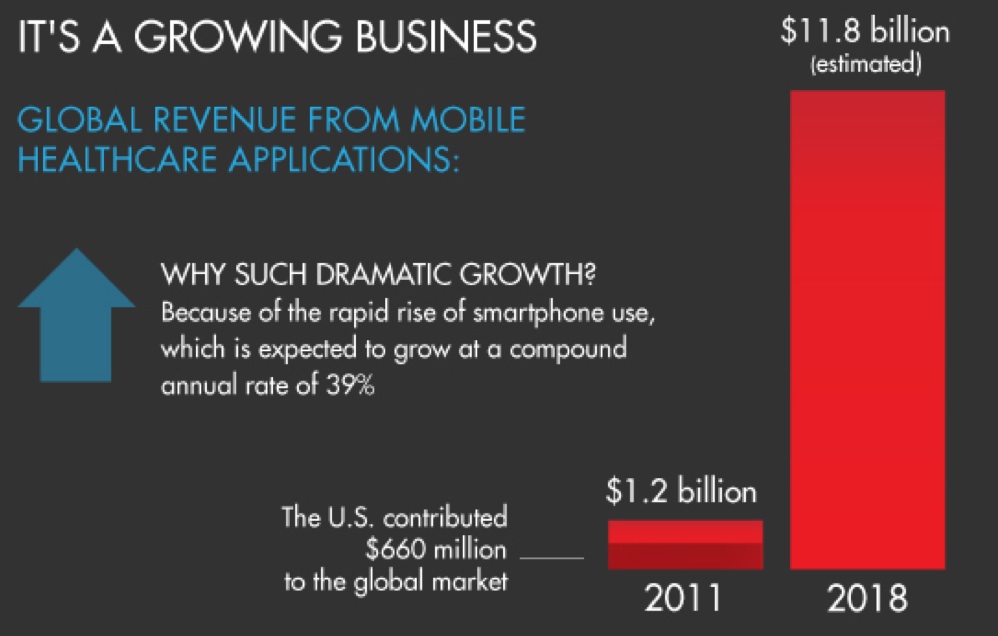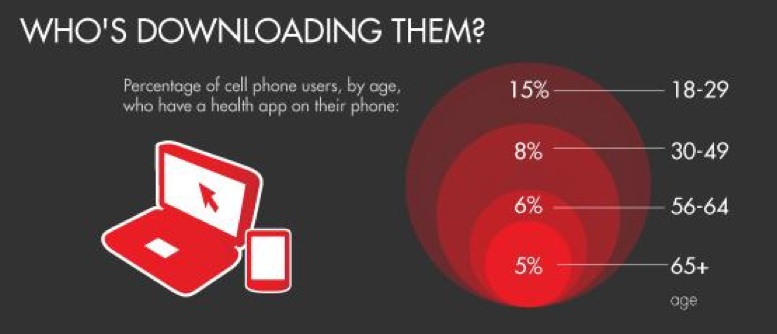Mobile Apps are becoming a major delivery vehicle for health services of all kinds.
 There’s a new jargon term in town: mHealth. The health sector is a huge growth area for mobile apps.
There’s a new jargon term in town: mHealth. The health sector is a huge growth area for mobile apps.
When you think about it, this makes sense, in so many areas. A mobile phone is the perfect place to deliver an app that helps you monitor what you eat, how you exercise, when you take medication or even keep tabs on your heart-rate. The benefit of instant availability from your pocket or handbag is clear. You can look up the calories in that delicious chocolate cake the restaurant is trying to tempt you with. (Chocolate of course is good for you, its practically a vitamin so you should eat the cake anyway). You can feel a glow of virtue when you complete the training regimen for the day set by your cyber trainer. There is a huge and growing range of lifestyle apps on the market, designed to make us look, feel, and live better.

But mHealth is not just a boon for you and I, with lifestyle apps offering maximum convenience to maintain that diet or count the number of steps we took today. It’s potentially a huge efficiency saving for health services, and can improve the quality of life for many sufferers of chronic illness or old age.
Apps can monitor a patients’ heart beat in day to day situations, rather than in the artificial surroundings of a clinic (does your heart rate go up when you’re waiting for your doctor to diagnose the problem?). Diabetics can benefit from on the spot blood sugar readings. The elderly can carry a built in alarm at all times to summon help in the event of a fall.
There are other ways in which mobile health provision can cut costs and improve care. Skype consultations with your doctor may become the norm. Why sit for an hour in a waiting room, catching flu from the toddler who is tripping over your legs, when you could stay home and talk it over in comfort? Mobile provision of health care is already offering a lifeline to remote communities, with the possibility of snapshotting and uploading descriptions of illness or injury, and receiving advice from the Cloud on the best way of treating the problem. Mobile health provision is likely to become mainstream for many purposes in both the developed and developing world.
Doctors also benefit from fast and easy access to data and records. Instead of rummaging through archaic filing cabinets, which may be situated in a hospital many miles from the care providers’ actual location, a quick query from a cell phone app can provide the required information.

Young people make up the biggest percentage of health app consumers. This is probably because the younger generation is no longer able to get out of bed without the help of their mobile phones. Lifestyle apps are probably the biggest area of interest for this group. Cell phone uptake in the older generation still lags behind, but this group is likely to be a strong growth area for mHealth apps, given the huge benefits mobile technology can deliver to the elderly.
It’s not hard to see why health is a growth sector for mobile apps of all kinds. And LiveCode developers are already getting a slice of the action. Check out HIV for Your Heart, an all encompassing app assisting HIV sufferers to remain well and lead healthy lives, by Tim Bobo, or Tracker 2 Go, a diet monitoring program by Andy Henshaw. Both of these are popular LiveCode built apps available to download in the Apple App store. A number of our developers have created apps to help doctors handle their records – obviously, for confidentiality reasons these tend to be proprietory and not publically available. If you have or are developing an app in the health sector, we’d love to hear from you!



Join the conversation